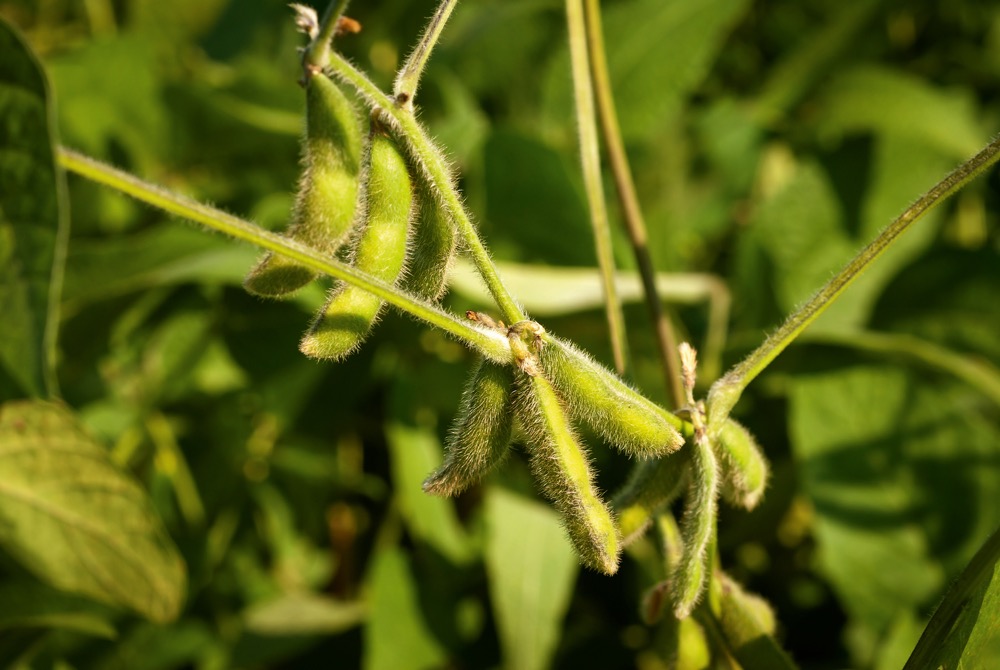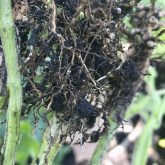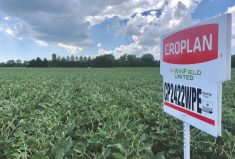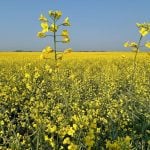UPDATED, July 21, 2017 — There appear to be few dicamba drift problems in Ontario, unlike in other soybean-growing areas in the U.S.
The provincial environment and climate change ministry, the body to which spray drift problems are reported in the province, has heard of some anecdotal cases this year, but nothing significant, according to Gary Wheeler, a spokesperson for the ministry.
Since 2002, the ministry has investigated 10 dicamba-related incidents, with two of those related to crop spraying.
Three U.S. states, Arkansas, Missouri and Tennessee, have restricted the sale and use of dicamba herbicide due to drift issues affecting crops and other plants. There are reports of dicamba drift across other major soybean-producing states.
Read Also

Sensing the soil: Root cell research finds ‘stress hormone’
Research into how root cells react to soil stressors could help plants better adapt to changes in their climate.
Peter Sikkema, professor of field crop weed management at the University of Guelph’s Ridgetown College, said he has been told by herbicide companies that there are some cases of dicamba drift in Ontario this year.
“It’s not that we don’t have cases, just not to the same extent (as the Americans),” he says. “I think Ontario farmers have done a good job. I think that’s really encouraging.”
Jason Deveau, OMAFRA’s application technology specialist at Simcoe, said there are several reasons why the issue hasn’t arisen here, including fewer soybean acres, different weed pressures and communications which encouraged pre-emergent spraying.
However, unlike the more transparent pesticide committees in some U.S. states, there isn’t a highly public place to report pesticide drift issues in Ontario. Drift cases are reported to the Ontario Ministry of the Environment and Climate Change.
In the U.S., crop advisors, university extension agents and farmers are writing, speaking and posting on social media about the issue. In Ontario, there’s barely a whisper on the subject.
Deveau said he likes to think the extensive communication campaign by academia, government and the industry to make cautious use of dicamba on dicamba-resistant soybeans helped minimize potential problems.
The message from companies making new dicamba formulations was that the more green tissue in a field being sprayed, the more likely it is to be volatile.
That’s why the message to Ontario growers was to spray dicamba as a pre-emergent spray, with some residual weed control. That way the herbicide would help control glyphosate resistant weeds, but wouldn’t be applied when the crop was actively growing.
“I think BASF and Monsanto have done quite a good job educating growers on off-site movement,” Sikkema said. “Ontario farmers have consequently used appropriate equipment to apply it.”
The Monsanto Roundup Ready Xtend system was developed to help manage weeds that have become resistant to glyphosate by putting a dicamba-resistance trait into its Roundup Ready 2 Xtend soybeans. Monsanto is selling Xtendimax, a new-generation dicamba herbide to go with the system. BASF also developed a new-generation dicamba called Engenia.
Palmer amaranth is an aggressive weed that is increasingly glyphosate-resistant. It is not yet a significant problem in Canada. Knocking out glyphosate-resistant Palmer amaranth would be a reason U.S. farmers would spray dicamba on more mature soybeans than has been done in Canada.
As the system becomes more established in Canada, and other glyphosate-resistant weeds grow more of a problem, there may be more temptation to spray later here.
The heat in some areas of the U.S. could also have an effect on volatility of the spray, Deveau said.
There also isn’t the sheer volume of soybean and cotton acres in Ontario that there are in the U.S., which would naturally generate more complaints. The U.S. also has more, older dicamba chemistries still on the market. Their use in-crop makes for even more volatility than newer formulations.
There still are other old dicamba formulations, such as Banvel and Distinct, available in Canada, Sikkema noted, but added “I think growers are using the appropriate formulations and applying it correctly.”
It will take time to sort out how hundreds of thousands of acres were damaged in the U.S.
“Who knows what the No. 1 factor will be, or is it cumulative?” Deveau asked. “Or are there one or two major causes?
“For now, up here, let’s continue to play it safe and by the rules. If someone deems spraying might be too risky, bail. It is not worth the risk.”
There are other options to manage glyphosate-resistant weeds in Ontario, Sikkema said.
“I think with the herbicide options we have today, I do think we can manage the glyphosate-resistant weeds we have today with alternative chemistry and I don’t think we are forced to use dicamba.”
















